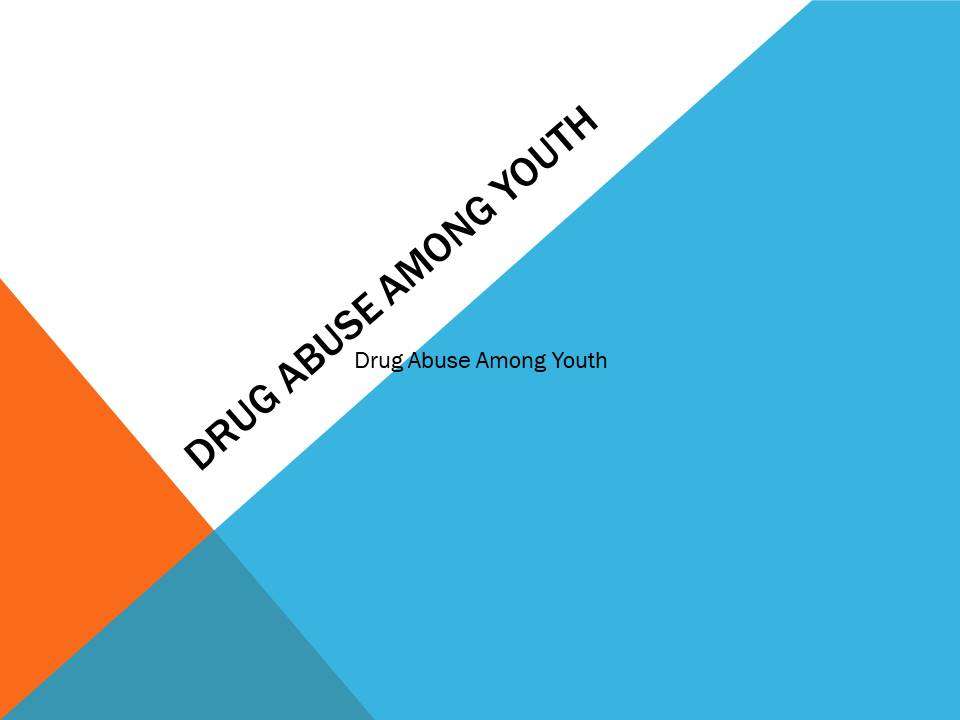Exploring the Importance and Coverage of Third-Party Car Insurance in the Modern Era
Introduction:
In the United States, car insurance is an essential aspect of vehicle ownership and operation. Among the various types of car insurance coverage available, third-party car insurance holds a significant role. This article delves into the importance and coverage of third-party car insurance in the modern era, specifically in the American context.
- Understanding Third-Party Car Insurance:
In the United States, third-party car insurance, also known as liability insurance, is a fundamental component of the insurance landscape. It serves as a safeguard for drivers, protecting them from financial liabilities that may arise if they cause damage or injury to others while operating their vehicles. Unlike comprehensive or collision insurance, which primarily focus on covering damages to the insured driver’s own vehicle, third-party car insurance is primarily concerned with providing protection to those affected by an accident.
The concept behind third-party car insurance is based on the principle of financial responsibility. It ensures that drivers take responsibility for their actions on the road and have the means to compensate others for any harm they may cause. By having this insurance coverage, drivers can fulfill their obligations and mitigate the potential financial burden resulting from an accident.
In the event of an accident, third-party car insurance provides coverage for two main types of liabilities: bodily injury and property damage. Bodily injury liability coverage comes into play if the insured driver causes harm or injury to another person. It helps cover medical expenses, hospital bills, rehabilitation costs, and even legal fees that may arise from the injured party’s claims. This coverage ensures that injured individuals receive the necessary medical attention and compensation for their suffering.
Property damage liability coverage, on the other hand, protects the insured driver against claims for damage caused to another person’s property. This includes damage to vehicles, buildings, or any other structures involved in the accident. The coverage helps cover the costs of repairing or replacing the damaged property, ensuring that the affected party can recover their losses without bearing the financial burden alone.
It’s important to note that third-party car insurance coverage limits exist. These limits determine the maximum amount an insurance company will pay for a claim. They are typically represented by two numbers, such as 50/100/25, indicating the maximum amount in thousands of dollars the insurance will cover per person injured, per accident, and for property damage, respectively. Drivers have the option to choose higher limits if they desire additional protection beyond the minimum requirements set by their state.
Moreover, drivers may also consider purchasing optional coverage, such as uninsured/underinsured motorist coverage. This coverage provides protection if they are involved in an accident with a driver who lacks adequate insurance coverage. It ensures that the insured driver can still receive compensation for injuries and damages caused by an at-fault party who is unable to fulfill their financial responsibilities.
In summary, third-party car insurance is a critical aspect of responsible vehicle ownership in the United States. It ensures that drivers have the means to fulfill their financial obligations if they cause harm or damage to others while operating their vehicles. By understanding the coverage provided and selecting appropriate policy limits, individuals can navigate the roads with confidence, knowing they are protected from potentially significant financial liabilities.
- Legal Requirements and Mandatory Coverage:
In the United States, car insurance requirements and regulations vary from state to state. However, almost all states have mandatory liability insurance laws in place. These laws aim to ensure that drivers maintain a minimum level of financial responsibility to cover potential damages and injuries resulting from car accidents.
Each state sets its own minimum liability coverage requirements, typically expressed in a three-number format. For example, a common requirement might be 25/50/25, where the first number represents the bodily injury liability limit per person, the second number represents the bodily injury liability limit per accident, and the third number represents the property damage liability limit.
These minimum coverage requirements serve as a baseline level of protection, ensuring that drivers can cover some of the costs associated with an accident. However, it’s important to note that the minimum coverage may not be sufficient in certain situations, especially if the damages and injuries exceed the coverage limits. In such cases, the driver may be personally responsible for the remaining costs.
Failure to maintain the mandatory liability insurance coverage can lead to legal consequences. Penalties for driving without insurance can include fines, suspension of driving privileges, vehicle impoundment, or even imprisonment in some cases. Additionally, being uninsured or underinsured may limit the driver’s ability to seek compensation for their own injuries and damages if they are involved in an accident caused by another party.
It’s worth noting that a few states employ alternative systems to liability insurance. Some states allow drivers to provide proof of financial responsibility through methods such as self-insurance or surety bonds. However, these options generally require demonstrating the ability to cover potential liabilities in a manner that satisfies state requirements.
To comply with the legal requirements, drivers must obtain and maintain the minimum liability coverage mandated by their state. It is advisable to review the specific regulations and consult with insurance providers to ensure compliance with the applicable laws.
In conclusion, the United States has mandatory liability insurance laws in place to ensure that drivers have a minimum level of financial responsibility in case of an accident. Understanding the specific requirements of one’s state and obtaining the appropriate liability coverage is essential to comply with the law and protect oneself from potential legal and financial consequences. By maintaining the mandatory coverage and considering higher limits, drivers can fulfill their legal obligations and have a greater level of protection against potential liabilities arising from car accidents.
III. Coverage and Benefits:
Third-party car insurance provides essential coverage and benefits to drivers in the United States. By understanding the coverage options available, individuals can make informed decisions to protect themselves and others in case of an accident.
- a) Bodily Injury Liability Coverage: Bodily injury liability coverage is a crucial component of third-party car insurance. This coverage helps protect the insured driver from financial liabilities if they cause injuries or death to another person in an accident. It covers medical expenses, hospital bills, rehabilitation costs, and even legal fees that may arise from the injured party’s claims. Bodily injury liability coverage ensures that those injured in an accident receive necessary medical treatment and compensation for their suffering. It provides peace of mind for the insured driver, knowing that they have the means to fulfill their financial responsibilities in case of bodily harm caused to others.
- b) Property Damage Liability Coverage: Property damage liability coverage is another significant aspect of third-party car insurance. This coverage safeguards the insured driver against claims for damage caused to another person’s property, such as vehicles, buildings, or other structures. If the insured driver is at fault for an accident that results in property damage, this coverage helps cover the costs of repairing or replacing the damaged property. Property damage liability coverage ensures that the affected party can recover their losses without bearing the financial burden alone. It provides financial protection to the insured driver, mitigating potential expenses resulting from property damage claims.
The coverage limits for bodily injury and property damage liability are specified in the insurance policy. It is important for drivers to carefully consider their coverage limits to ensure adequate protection. While states have minimum coverage requirements, drivers may opt for higher coverage limits to enhance their level of protection and reduce the risk of personal financial liability.
By having third-party car insurance, drivers benefit from the peace of mind that comes with knowing they have coverage in place to handle potential liabilities arising from accidents. It provides a layer of financial protection and ensures that drivers can fulfill their obligations to compensate others for damages or injuries caused by their actions on the road. This coverage is particularly important in situations where the costs of medical treatment, property repairs, or legal proceedings can be substantial.
In conclusion, third-party car insurance offers valuable coverage and benefits to drivers in the United States. Bodily injury liability coverage protects against claims for injuries or death caused to others in an accident, while property damage liability coverage provides protection against claims for damage to others’ property. By understanding the coverage options and selecting appropriate limits, drivers can secure the necessary financial protection and fulfill their responsibilities in case of an unfortunate accident.
- Limits and Additional Coverage Options:
When considering third-party car insurance, it’s important to understand the concept of policy limits. Policy limits refer to the maximum amount an insurance company will pay for a claim under the coverage provided. These limits are typically expressed in two numbers, such as 50/100/25, representing the maximum amounts in thousands of dollars that the insurance will cover per person injured, per accident, and for property damage, respectively.
The policy limits play a crucial role in determining the extent of financial protection provided by the insurance policy. It’s essential for drivers to carefully consider their coverage limits based on their individual circumstances. While states have minimum coverage requirements, it’s often advisable to opt for higher limits to ensure adequate protection. Higher limits can provide additional coverage in case of severe accidents, where medical expenses and property damage costs can quickly escalate.
In addition to the mandatory liability coverage, drivers have the option to purchase additional coverage to enhance their protection. One such option is uninsured/underinsured motorist coverage. This coverage comes into play when the insured driver is involved in an accident caused by a driver who either has no insurance or lacks sufficient coverage to fully compensate for the damages and injuries. Uninsured/underinsured motorist coverage helps bridge the gap and provides compensation to the insured driver for their own injuries and damages.
Furthermore, drivers may consider other optional coverages, such as medical payments coverage or personal injury protection (PIP). These coverages help cover medical expenses, rehabilitation costs, and sometimes lost wages for the insured driver and their passengers, regardless of who is at fault in an accident. They provide an additional layer of financial protection and can be especially valuable in situations where health insurance coverage is limited.
It’s important for drivers to carefully review their insurance policies and consult with their insurance providers to understand the coverage options available, the associated costs, and the potential benefits. By assessing their needs and considering additional coverage options, drivers can tailor their insurance policies to provide comprehensive protection against potential liabilities and unexpected expenses resulting from accidents.
In conclusion, policy limits play a critical role in determining the extent of financial protection provided by third-party car insurance. Drivers should carefully consider their coverage limits, opting for higher limits if feasible, to ensure adequate protection. Additionally, exploring additional coverage options, such as uninsured/underinsured motorist coverage or medical payments coverage, can provide enhanced protection and peace of mind on the road. Understanding these limits and additional coverage options allows drivers to make informed decisions and secure the appropriate level of coverage for their individual needs.
- Importance of Third-Party Car Insurance:
Third-party car insurance holds immense importance in the realm of vehicle ownership and operation in the United States. It serves as a vital protective measure that offers several significant benefits to drivers. Understanding the importance of third-party car insurance can help individuals make informed decisions and ensure they are adequately covered in case of an accident.
One of the primary reasons third-party car insurance is crucial is that it helps drivers fulfill their financial responsibilities. If a driver causes an accident resulting in injuries or property damage to another party, they can be held legally and financially liable for the damages. Third-party car insurance ensures that drivers have the means to compensate the affected party for their losses, including medical expenses, property repairs, and potential legal fees. Without this insurance coverage, drivers would be personally responsible for covering these expenses, which can be financially devastating.
Moreover, third-party car insurance provides peace of mind. Accidents can occur unexpectedly, and the resulting damages and injuries can be substantial. By having appropriate coverage, drivers can have peace of mind knowing that they are protected against potential financial liabilities that may arise from an accident. This peace of mind allows drivers to focus on their driving without constantly worrying about the potential consequences of an unfortunate incident.
Third-party car insurance also protects the driver’s assets. In the event of a severe accident, the financial impact can extend beyond the coverage limits of the insurance policy. Without adequate coverage, drivers may be at risk of losing their personal assets, such as savings, property, or other valuables, to cover the remaining costs. By having third-party car insurance, drivers ensure that their assets are protected from potential claims and can preserve their financial stability.
Additionally, third-party car insurance is a legal requirement in most states. By complying with the mandatory insurance laws, drivers avoid penalties, fines, and potential suspension of their driving privileges. Driving without the required insurance coverage not only exposes drivers to legal consequences but also puts them at risk of facing significant financial burdens if they are involved in an accident.
Lastly, third-party car insurance promotes a sense of collective responsibility. By having insurance coverage that protects others, drivers contribute to a safer and more responsible driving culture. It helps ensure that everyone on the road has access to financial compensation if they are involved in an accident caused by another driver’s negligence. This collective responsibility fosters a safer driving environment and promotes the overall well-being of the community.
In conclusion, third-party car insurance is of utmost importance in the United States. It allows drivers to fulfill their financial responsibilities, provides peace of mind, protects their assets, and ensures compliance with legal requirements. By understanding the significance of third-party car insurance, drivers can make informed decisions and secure appropriate coverage to safeguard themselves and others in case of an accident.
Conclusion:
In the modern era, third-party car insurance remains a crucial aspect of responsible vehicle ownership and operation in the United States. With legal requirements in place and the potential for significant financial liabilities, drivers must understand the importance and coverage of third-party car insurance. By securing appropriate coverage, individuals can navigate the roads with confidence, knowing they have financial protection in case of an unfortunate accident.
Third-Party Car Insurance, Third-Party Car Insurance, Third-Party Car Insurance, Third-Party Car Insurance, Third-Party Car Insurance, Third-Party Car Insurance, Third-Party Car Insurance, Third-Party Car Insurance, Third-Party Car Insurance, Third-Party Car Insurance, Third-Party Car Insurance, Third-Party Car Insurance, Third-Party Car Insurance, Third-Party Car Insurance, Third-Party Car Insurance, Third-Party Car Insurance,
Third-Party Car Insurance, Third-Party Car Insurance, Third-Party Car Insurance, Third-Party Car Insurance, Third-Party Car Insurance, Third-Party Car Insurance, Third-Party Car Insurance, Third-Party Car Insurance, Third-Party Car Insurance, Third-Party Car Insurance, Third-Party Car Insurance, Third-Party Car Insurance, Third-Party Car Insurance, Third-Party Car Insurance, Third-Party Car Insurance, Third-Party Car Insurance,
Third-Party Car Insurance, Third-Party Car Insurance, Third-Party Car Insurance, Third-Party Car Insurance, Third-Party Car Insurance, Third-Party Car Insurance, Third-Party Car Insurance, Third-Party Car Insurance, Third-Party Car Insurance, Third-Party Car Insurance, Third-Party Car Insurance, Third-Party Car Insurance, Third-Party Car Insurance, Third-Party Car Insurance, Third-Party Car Insurance, Third-Party Car Insurance,



